Veterinarians are always on the lookout for novel technologies that will assist them in the treatment of animals in their care. Often, the latest treatments can be expensive, ineffective or traumatic for animals and their owners, making them unappealing on several levels.
Interested in offering hyperbaric oxygen treatment at your veterinarian clinic?
Call: 850-510-2781
Hyperbaric medicine is different. Unlike many traditional therapies, veterinary hyperbaric oxygen therapy can ameliorate a number of conditions without causing animals any distress or the use of invasive procedures.
What Is Oxygen Therapy For Pets?
Hyperbaric medicine for pets, sometimes called oxygen therapy, is a type of treatment that involves keeping the pet in a high-oxygen environment. The veterinarian places the animal in a special, transparent container and then switches on the system, changing the atmospheric composition from normal levels of oxygenation (around 20 percent), up to close to 100 percent.
Although it seems like a simple measure, it’s only recently that researchers have begun to recognize the real therapeutic potential of hyperbaric medicine. Animals with seemingly intractable health issues often improve with HBOT for pets. For some conditions, it can have almost miraculous effects.
Why Should Veterinarians Offer Hyperbaric Medicine For Pets?
 It’s Doesn’t Cause Pets Distress
It’s Doesn’t Cause Pets Distress
Manufacturers design hyperbaric animal chambers intending to give pets peace of mind. An animal hyperbaric chamber is a special device that reduces feelings of distress and helps the pet relax during treatment.
It Increases Trust Between Vets And Owners
If veterinarians can offer hyperbaric medicine for pets, they stand a better chance of helping animals recover from ailments and developing a deeper trust with their owners. Most owners don’t want their pets to undergo dangerous or risky procedures. If there’s a risk-free alternative, they’ll it. Veterinarian hyperbaric treatment is a low-risk alternative to traditional therapy.
It Is Often More Effective Than Standard Treatment
For many conditions and health problems, which we will discuss below, pet oxygen therapy is more effective than standard procedures. Pets and owners can see better results from this type of treatment than they would with regular medication or surgery.
What Does Hyperbaric Medicine For Pets Treat?
Since the 1940s, medical practitioners have used HBOT on divers who ascend too fast to the surface and experience decompression sickness. The idea was to get as much oxygen as possible into the blood and displace other more dangerous gases. But over time, new research has found that this specific therapy can treat a wide variety of conditions in both humans and animals.
Here are some of the common conditions that veterinarians can treat using oxygen therapy.
-
- Swelling. Swelling is a healing mechanism that animals use to protect damaged tissue and supply the site of injury with nutrients required for repair. However, for some injuries, such as crush injuries and post-operative, the swelling can be a hindrance to recovery. Clinical observation suggests that the benefits of injury recovery with hyperbarics for pets is substantial. The increased oxygenation of the blood helps to open up blood vessels, reduce swelling and enable healing factors to travel to the site of injury. Animals tend to recover much faster when in hyperbaric therapy because of the treatment’s ability to spur the growth of new blood vessels to supply the wound with the raw materials it needs for recovery.
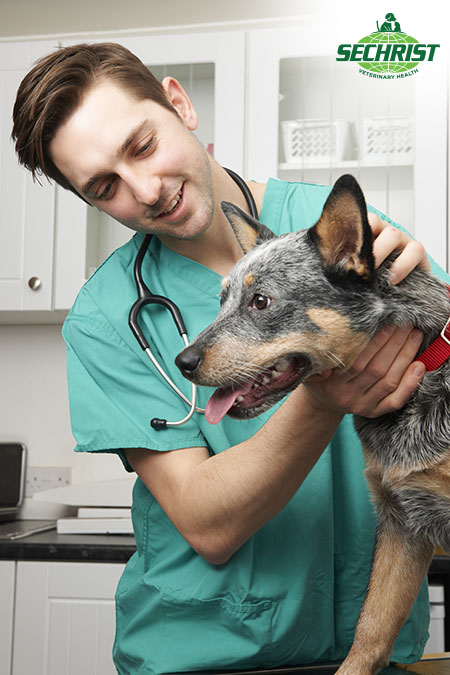
- Smoke Inhalation. Animals exposed to fire and smoke can benefit from hyperbaric medicine for several reasons. First, an animal exposed to smoke may be suffering from carbon monoxide poisoning. Carbon monoxide binds to the hemoglobin in the blood, preventing it from picking up the oxygen that the animal needs for normal respiration. If left untreated, the animal can suffocate and suffer brain damage. Oxygen chambers at one-to-three times sea-level air pressure help to force more oxygen into a pet’s red blood cells, ensuring that they get enough oxygen as the CO leaves their system. Pet oxygen chambers can also be ideal for when a pet is suffering from fire-induced thermal injury, hydrogen cyanide poisoning, or neurologic damage.
- Pancreatitis. Hyperbaric oxygen therapy may be able to help pets that are suffering from pancreatitis, a condition in which the digestive enzymes released by the pancreas begin to exert their effect before entering the intestines.
- Near-Drowning. When an animal has been underwater, unable to breathe, for a considerable period, it’s vital to help establish oxygen levels as quickly as possible. Pet oxygen chambers do this by calming the animal and increasing the amount of oxygen available to their cells.
- Wounds That Don’t Want To Heal. Sometimes, when there is restricted blood flow, injuries do not heal. Blood cannot get to the affected area on the pet’s body, preventing the normal healing process. Oxygen therapy, however, can be an effective way to restore blood supply and kickstart the healing process. A regular schedule of treatment can soon restore blood flow and help the animal towards a faster recovery.
Why Is Pet Oxygen Therapy So Powerful?
Researchers offer several explanations for why pet oxygen therapy is such a potent intervention.
One of the primary mechanisms appears to be the anti-inflammatory effect. Evidence suggests that a high-pressure, high-oxygen environment upregulates genes associated with fighting inflammation and downregulates those that create it. Lower inflammation leads to less swelling which, in turn, allows more of the healing factors to reach the site of injury.
A second mechanism is the increased blood flow to the affected tissue. As blood becomes more oxygenated and oxygen tension increases, it gets easier for it to deliver healing factors to the affected site and begin the recovery process. In some injuries, especially trauma and crush injuries, blood flow can be cut off. But with hyperbaric treatment and better blood oxygenation, there’s a greater ability for particles to diffuse into the affected tissues.
Veterinarians who are serious about hyperbaric therapy should investigate veterinary hyperbaric chamber for sale. Access to a pet oxygen chamber allows veterinary practices to offer superior treatment to pets, giving owners more options over which treatment their animal receives.
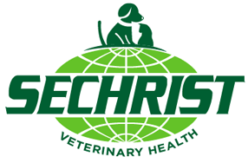
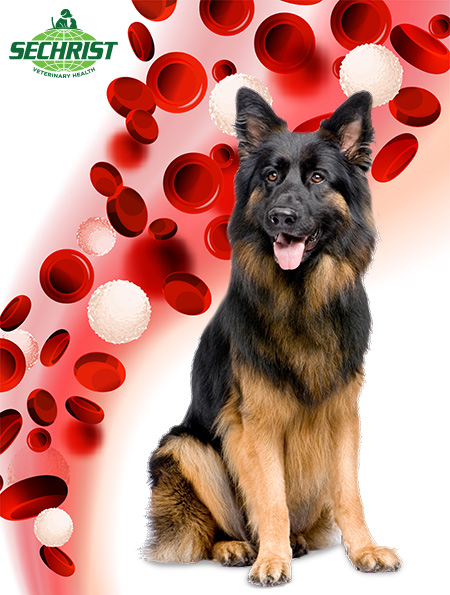 Hyperbaric oxygen therapy or HBOT has assumed an ever-expanding role in modern medicine practices-for both humans and pets. In veterinary medicine, hyperbaric oxygen therapy continues to demonstrate its effectiveness in primary and adjunctive care. It offers significant medical benefits through enhanced wound healing, improved infection control, and preservation of damaged tissues; plus several more. It also helps alleviate the growing number of complicated, expensive or otherwise hopeless medical problems.
Hyperbaric oxygen therapy or HBOT has assumed an ever-expanding role in modern medicine practices-for both humans and pets. In veterinary medicine, hyperbaric oxygen therapy continues to demonstrate its effectiveness in primary and adjunctive care. It offers significant medical benefits through enhanced wound healing, improved infection control, and preservation of damaged tissues; plus several more. It also helps alleviate the growing number of complicated, expensive or otherwise hopeless medical problems.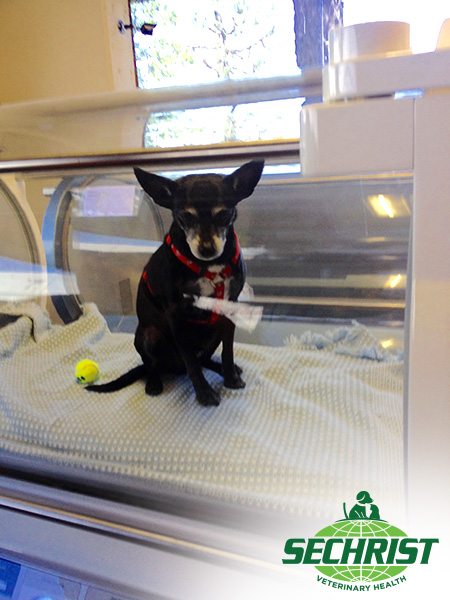 Unlike many procedures, HBOT chambers provide pets with a relaxing and peaceful environment. Many of them enjoy the treatment. Also,
Unlike many procedures, HBOT chambers provide pets with a relaxing and peaceful environment. Many of them enjoy the treatment. Also, 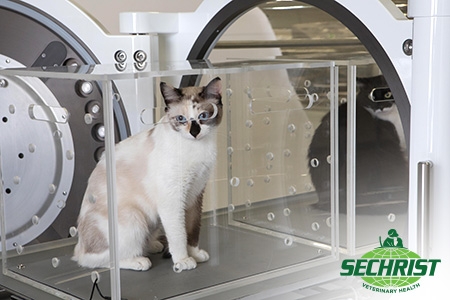 When trauma or crush injury occurs, there can be a reduction in blood flow and swelling to the area. By placing pets in an HBOT chamber breathing 100% oxygen, veterinarians can increase oxygen tension levels by 10 to 20 times that of normobaric oxygen breathing. This level increase in oxygen tension allows for faster and better healing of the animal.
When trauma or crush injury occurs, there can be a reduction in blood flow and swelling to the area. By placing pets in an HBOT chamber breathing 100% oxygen, veterinarians can increase oxygen tension levels by 10 to 20 times that of normobaric oxygen breathing. This level increase in oxygen tension allows for faster and better healing of the animal.